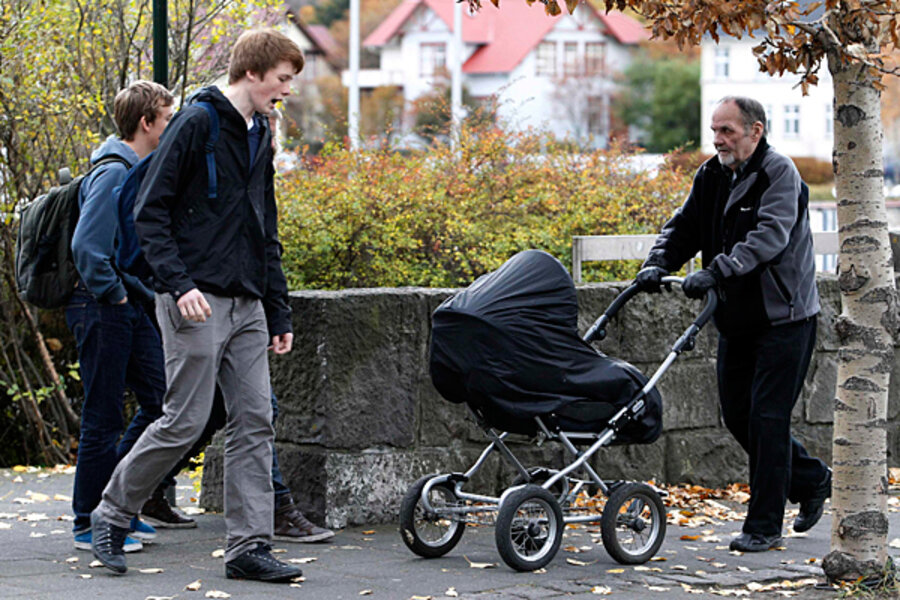Global Gender Gap Index: Iceland tops, France drops, and US breaks into top 20
Loading...
| Boston
Many women around the world are now as educated and healthy as men. But when it comes to politics and the labor market, they are still fighting to close the gender gap. The World Economic Forum provides ample evidence of that disparity – and many other differences between women and men across the globe – in the 2010 Global Gender Gap Report released today.
The report shows that while women have come a long way in education and health equity, there is still a significant lag in economic and political participation, says Ricardo Hausmann, one of the authors of the report and the director of the Center for International Development at Harvard University.
"For the majority of the countries, women now have more education than men" and health is no longer a major issue for most, says Mr. Hausmann, who created the index. "What becomes more of an issue is economic participation and political participation."
The report's index measures the gender gap by evaluating women's access to resources relative to the resources available to the entire country's population, which prevents a country's level of development from having too much influence on the rankings. Countries are evaluated on four criteria: economic participation and opportunity, political empowerment, education, and health.
Scandinavians on top
Scandinavian countries, well-known for their extensive social welfare systems and family-friendly economic policies, took five of the top 10 spots in the list, with Iceland leading the way at No. 1.
According to the report, the Scandinavian countries scored particularly well on economic opportunity because of high labor participation rates for women, low salary gaps between men and women, and ample opportunities for women to hold leadership positions.
A key cause of that is probably the high representation of women in politics and senior management positions, allowing women to advocate for the policies that allow them to achieve equity with men, Hausmann says.
RELATED: The 2010 Global Gender Gap Index's Top 10 countries for gender equity
"The social policies in those countries have made it easier for women to incorporate motherhood and marriage with work," Hausmann says. The report cites policies such as mandatory paternal leave, paternal leave benefits, tax incentives, and federal programs to assist women's reentry to the work force. Paternal leave makes men as much of an economic liability as women for companies that have to absorb the costs of leave.
US breaks into the top 20
The United States broke into the top 20 this year for the first time, up from No. 31 last year. The report cites the US's strong record in education equality, particularly literacy and enrollment numbers, as well as a No. 6 ranking worldwide in economic opportunity. Political empowerment is a US weakness in the index and the lack of female representation in Congress and state government is an obstacle to implementing policy that allows women more opportunity in the workforce, Hausmann says.
While the US climbed, France fell precipitously – from No. 18 last year to No. 46 this year. The report attributes this mostly to poor performance in political empowerment because the proportion of women holding ministerial positions has declined both absolutely and relative to the number of ministers, which has increased in recent years. France also ranks very low on salary equity – No. 127 out of 134.
RELATED: International women's day: Which nation has smallest pay gap for women?
Although North America does not have any countries in the top 10, it was the strongest overall region, followed in order by Europe and Central Asia, Latin America and the Caribbean, Asia and the Pacific, Sub-Saharan Africa, and the Middle East and North Africa. Yemen is the lowest-performing country on the index (No. 134), with only 46 percent of its gender gap closed. Pakistan and Chad came in just above it, at 132 and 133.
Numbers in the Middle East are somewhat skewed by the fact that while women often enroll in universities at the same rate as men, they are mostly prevented from entering the workforce, Hausmann says.
Education, health gaps closing
Eighty-six percent of the countries on the index since it began in 2006 (there were 114 countries in the first edition and there are 134 this year) have improved their performance on closing the gender gap. An average of 96 percent of the health gap has been closed, as well as 93 percent of the education gap, 59 percent of the economic opportunity gap, and 18 percent of the political empowerment gap.
But no country has achieved gender equality yet, and that's unlikely to happen anytime soon, Hausmann says.
Instead, people should watch what happens in the next couple decades, as women become the more educated gender in much of the world – something that has already happened in many countries – and begin to enter the workforce and politics. A dramatic restructuring of marriage, motherhood, and family roles could be on the horizon, especially in Latin America where the process has already started, Hausmann says.
"There is a major transformation we are about to see.... The check is in the mail."





